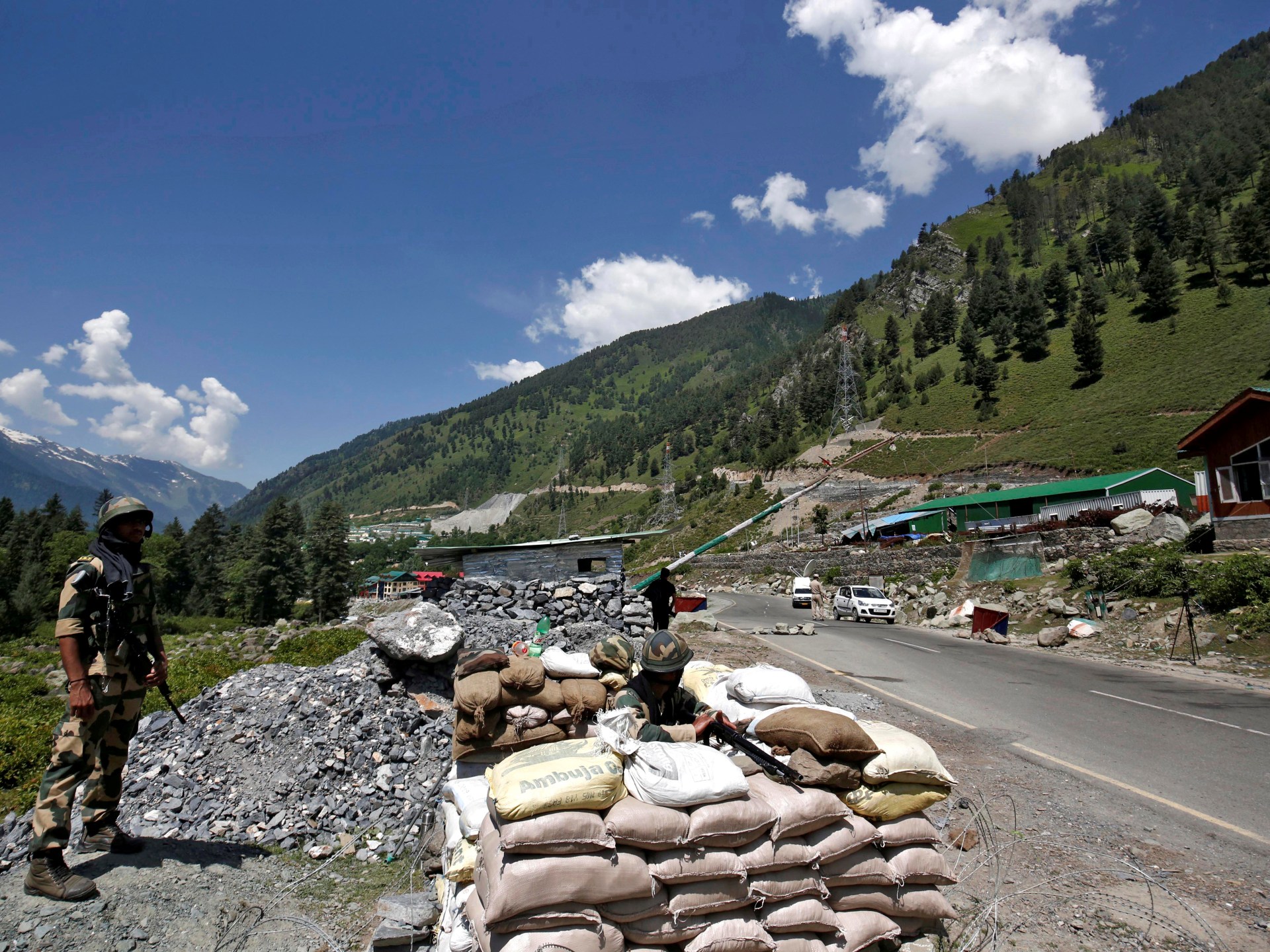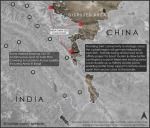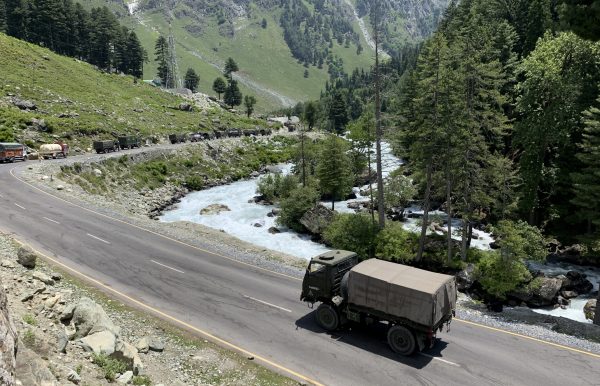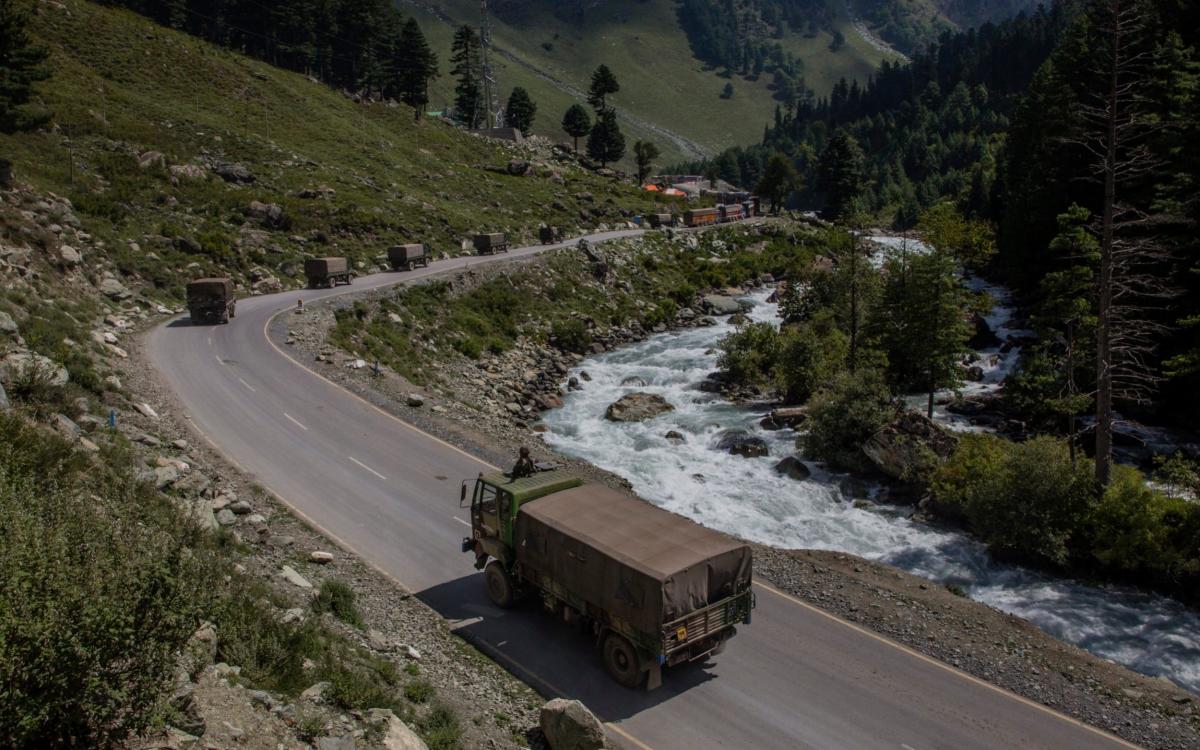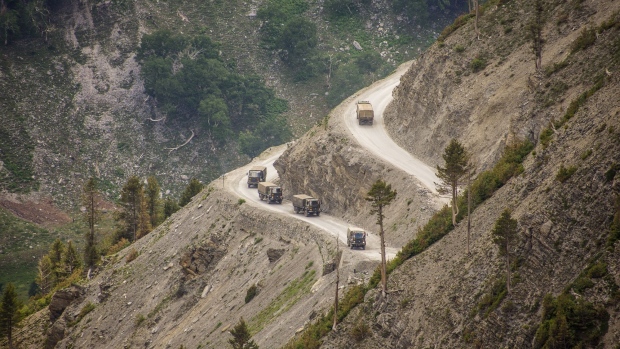Posted for fair use.....

 www.eurasiareview.com
www.eurasiareview.com
The Good, The Bad, And The Ugly In India-China Nuclear Relations – Analysis
October 29, 2020 IPCS 1 Comment
By IPCS
By Dr Manpreet Sethi*
India-China nuclear relations are unique and complex. China refuses to recognise India as a nuclear weapons state (NWS), though there is no denying the reality of India’s nuclear weapons. In fact, this has been accepted by the international community as illustrated by India’s accommodation into the non-proliferation regime. So, China’s objections to India’s nuclear status is a political issue. However, the geopolitical circumstances of the two countries—conjoined by geography and separated by historically incomplete border demarcations—add a risky dimension to their existence as nuclear neighbours. Unresolved territorial disputes result in frequent border skirmishes that have the potential to escalate.
It is therefore in the interest of both to acknowledge the nuclear relationship and find ways to address risks. Can they do so? The answer to this question lies in understanding the good, bad, and ugly dimensions that simultaneously characterise this relationship.
The good in India-China relations can be seen in the sense of nuclear stability that both countries are able to engender despite tensions created by territorial issues. This is evident in the current military stand-off that has been ongoing for almost six months now. Yet, neither has drawn attention to their nuclear weapons despite the unprecedented violence that broke out at the Line of Actual Control (LAC) in June 2020, in which both sides lost lives for the first time in decades. Considering this as a serious inflection point, New Delhi has decided to significantly scale-down its economic engagement with China, fast-track conventional capability build-up, strengthen partnerships with other like-minded countries (fortunately there are many that have been rankled by China’s aggressive posture), and re-examine positions on Tibet, Taiwan, and the Quad.
Are any ripple effects expected on either side’s nuclear positions? It does not seem so. India has not announced any changes to its nuclear positions, though the suggestion of changing to a more offensive nuclear strategy owing to the conventional asymmetry with China has surfaced. However, policy changes are not deemed to be warranted given the understanding that it makes little sense to use nuclear weapons first in situations where the adversary has a secure second-strike capability. It could only lead to nuclear escalation by inviting similar retaliation without necessarily making a dent in the adversary’s conventional conflict.
Meanwhile, for China, changes in its nuclear capability and strategy are driven by its threat perception from the US. Its nuclear modernisation is in response to US ballistic missile defence and long-range conventional strikes that are seen to have the ability to degrade Beijing’s nuclear retaliatory capability. Debates in China about increasing nuclear numbers, revising alert levels or no first use (NFU), and deploying hypersonics or dual-use missiles are aimed at enhancing nuclear deterrence vis-a-vis the US. India does not figure in these calculations.
The officially declared Indian and Chinese NFUs, as well as a similarity in their approach towards nuclear weapons as instruments of deterrence and not war-fighting, have helped maintain a sense of nuclear stability while dialogue mechanisms try to resolve the ongoing impasse diplomatically. In fact, their nuclear behaviour is a practical demonstration of the value of NFU in adversarial nuclear dyads. It is a good example of a risk reduction measure worthy of emulation by other dyads.
The bad dimension of the India-China nuclear relationship can be found in the huge perception gap on nuclear motivations and threat perceptions, exacerbated by a largely blind acceptance of Western analysis and writings about each other. For instance, the recently released US Department of Defense (DoD) report on China’s military and strategic developments, which predicts significant nuclear growth in numbers and capabilities, has caused much concern in India. However, India’s sense of alarm needs to be tempered by the appreciation that there could be an inflation of the Chinese threat by the US for its own budgetary battles. Similarly, on the Chinese side, too, there is a tendency to echo Western scholars who perceive India’s nuclear weapons from the prism of prestige and status, and hence believe an inevitable technological progression towards counterforce capabilities and increased numbers. Given the West’s lack of understanding of the NFU’s military logic, many cast doubts on India’s continuing adherence to it.
A tendency to rely on such Western writings to learn about each other’s nuclear positions and perspectives creates room for misunderstanding and worst-case thinking between China and India. This is ironic because both sides in fact are consonant in several ways on nuclear philosophy. New Delhi and Beijing must have direct, bilateral dialogues on nuclear doctrines, force structures, and postures. The risks are only growing with the induction of new technologies, and China needs to get over its outdated attitude so meaningful engagement on nuclear issues can take place. Inadvertent escalation in future stand-offs will not be in either’s interest.
Finally, the ugly dimension of this relationship is found in China-Pakistan nuclear and missile proliferation. Knowledge of China’s material help to Pakistan is well-known. However, Chinese psychological and moral support to Pakistan’s use of terrorism is less understood. For instance, the larger international community has called out Pakistan for its support to terrorism, as evident in Pakistan having stayed on the Financial Action Task Force (FATF) grey list for so long. China, however, still continues to extend economic, political, and moral protection. This has not allowed or incentivised Rawalpindi to change its behaviour. By acting as benefactor towards Pakistan’s irresponsible nuclear behaviour, China helps create an ugly instability in the triangular relationship.
There is much in the India-China nuclear relationship that can be useful—bilaterally, regionally, and globally. These are the only two countries that offer an alternate perspective on nuclear weapons and deterrence, and demonstration of concepts such as NFU and low alert levels. Both eschew limited nuclear war. It will be a pity if they, too, are compelled by circumstances and misperceptions to sway from their sane nuclear policies of minimalism and defensiveness.
*Dr Manpreet Sethi is Distinguished Fellow with the Centre for Air Power Studies (CAPS), New Delhi.

The Good, The Bad, And The Ugly In India-China Nuclear Relations – Analysis
By Dr Manpreet Sethi* India-China nuclear relations are unique and complex. China refuses to recognise India as a nuclear weapons state (NWS), though there is no denying the reality of India’s nucl…
 www.eurasiareview.com
www.eurasiareview.com
The Good, The Bad, And The Ugly In India-China Nuclear Relations – Analysis
October 29, 2020 IPCS 1 Comment
By IPCS
By Dr Manpreet Sethi*
India-China nuclear relations are unique and complex. China refuses to recognise India as a nuclear weapons state (NWS), though there is no denying the reality of India’s nuclear weapons. In fact, this has been accepted by the international community as illustrated by India’s accommodation into the non-proliferation regime. So, China’s objections to India’s nuclear status is a political issue. However, the geopolitical circumstances of the two countries—conjoined by geography and separated by historically incomplete border demarcations—add a risky dimension to their existence as nuclear neighbours. Unresolved territorial disputes result in frequent border skirmishes that have the potential to escalate.
It is therefore in the interest of both to acknowledge the nuclear relationship and find ways to address risks. Can they do so? The answer to this question lies in understanding the good, bad, and ugly dimensions that simultaneously characterise this relationship.
The good in India-China relations can be seen in the sense of nuclear stability that both countries are able to engender despite tensions created by territorial issues. This is evident in the current military stand-off that has been ongoing for almost six months now. Yet, neither has drawn attention to their nuclear weapons despite the unprecedented violence that broke out at the Line of Actual Control (LAC) in June 2020, in which both sides lost lives for the first time in decades. Considering this as a serious inflection point, New Delhi has decided to significantly scale-down its economic engagement with China, fast-track conventional capability build-up, strengthen partnerships with other like-minded countries (fortunately there are many that have been rankled by China’s aggressive posture), and re-examine positions on Tibet, Taiwan, and the Quad.
Are any ripple effects expected on either side’s nuclear positions? It does not seem so. India has not announced any changes to its nuclear positions, though the suggestion of changing to a more offensive nuclear strategy owing to the conventional asymmetry with China has surfaced. However, policy changes are not deemed to be warranted given the understanding that it makes little sense to use nuclear weapons first in situations where the adversary has a secure second-strike capability. It could only lead to nuclear escalation by inviting similar retaliation without necessarily making a dent in the adversary’s conventional conflict.
Meanwhile, for China, changes in its nuclear capability and strategy are driven by its threat perception from the US. Its nuclear modernisation is in response to US ballistic missile defence and long-range conventional strikes that are seen to have the ability to degrade Beijing’s nuclear retaliatory capability. Debates in China about increasing nuclear numbers, revising alert levels or no first use (NFU), and deploying hypersonics or dual-use missiles are aimed at enhancing nuclear deterrence vis-a-vis the US. India does not figure in these calculations.
The officially declared Indian and Chinese NFUs, as well as a similarity in their approach towards nuclear weapons as instruments of deterrence and not war-fighting, have helped maintain a sense of nuclear stability while dialogue mechanisms try to resolve the ongoing impasse diplomatically. In fact, their nuclear behaviour is a practical demonstration of the value of NFU in adversarial nuclear dyads. It is a good example of a risk reduction measure worthy of emulation by other dyads.
The bad dimension of the India-China nuclear relationship can be found in the huge perception gap on nuclear motivations and threat perceptions, exacerbated by a largely blind acceptance of Western analysis and writings about each other. For instance, the recently released US Department of Defense (DoD) report on China’s military and strategic developments, which predicts significant nuclear growth in numbers and capabilities, has caused much concern in India. However, India’s sense of alarm needs to be tempered by the appreciation that there could be an inflation of the Chinese threat by the US for its own budgetary battles. Similarly, on the Chinese side, too, there is a tendency to echo Western scholars who perceive India’s nuclear weapons from the prism of prestige and status, and hence believe an inevitable technological progression towards counterforce capabilities and increased numbers. Given the West’s lack of understanding of the NFU’s military logic, many cast doubts on India’s continuing adherence to it.
A tendency to rely on such Western writings to learn about each other’s nuclear positions and perspectives creates room for misunderstanding and worst-case thinking between China and India. This is ironic because both sides in fact are consonant in several ways on nuclear philosophy. New Delhi and Beijing must have direct, bilateral dialogues on nuclear doctrines, force structures, and postures. The risks are only growing with the induction of new technologies, and China needs to get over its outdated attitude so meaningful engagement on nuclear issues can take place. Inadvertent escalation in future stand-offs will not be in either’s interest.
Finally, the ugly dimension of this relationship is found in China-Pakistan nuclear and missile proliferation. Knowledge of China’s material help to Pakistan is well-known. However, Chinese psychological and moral support to Pakistan’s use of terrorism is less understood. For instance, the larger international community has called out Pakistan for its support to terrorism, as evident in Pakistan having stayed on the Financial Action Task Force (FATF) grey list for so long. China, however, still continues to extend economic, political, and moral protection. This has not allowed or incentivised Rawalpindi to change its behaviour. By acting as benefactor towards Pakistan’s irresponsible nuclear behaviour, China helps create an ugly instability in the triangular relationship.
There is much in the India-China nuclear relationship that can be useful—bilaterally, regionally, and globally. These are the only two countries that offer an alternate perspective on nuclear weapons and deterrence, and demonstration of concepts such as NFU and low alert levels. Both eschew limited nuclear war. It will be a pity if they, too, are compelled by circumstances and misperceptions to sway from their sane nuclear policies of minimalism and defensiveness.
*Dr Manpreet Sethi is Distinguished Fellow with the Centre for Air Power Studies (CAPS), New Delhi.


![India's defence and foreign ministries declined to comment on the specifics of the latest negotiations [File:Reuters] India's defence and foreign ministries declined to comment on the specifics of the latest negotiations [File:Reuters]](https://www.aljazeera.com/wp-content/uploads/2020/11/2020-11-13T104610Z_1411329227_RC2A2K9Y8RTY_RTRMADP_3_INDIA-CHINA.jpg?resize=770%2C513)
